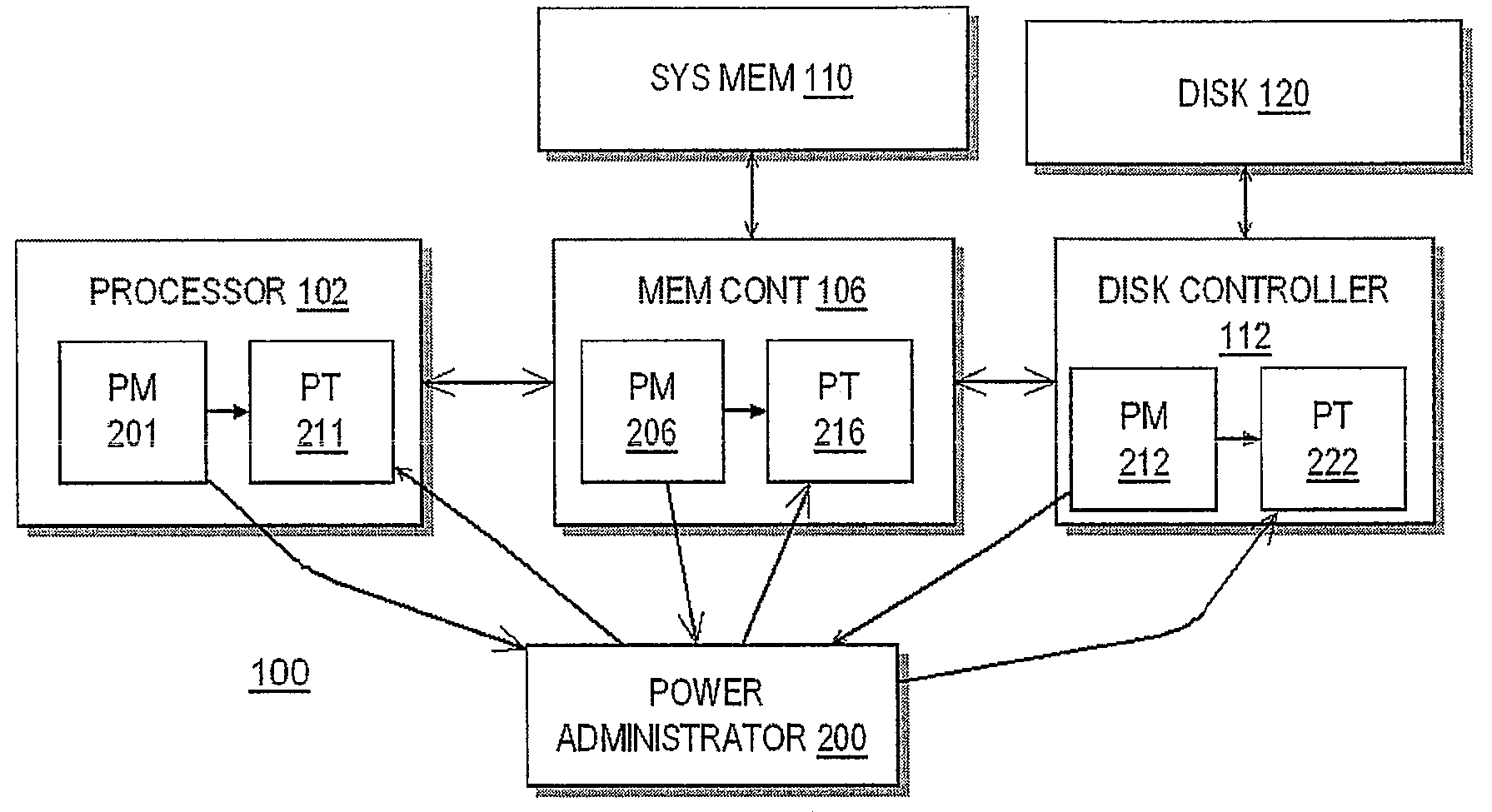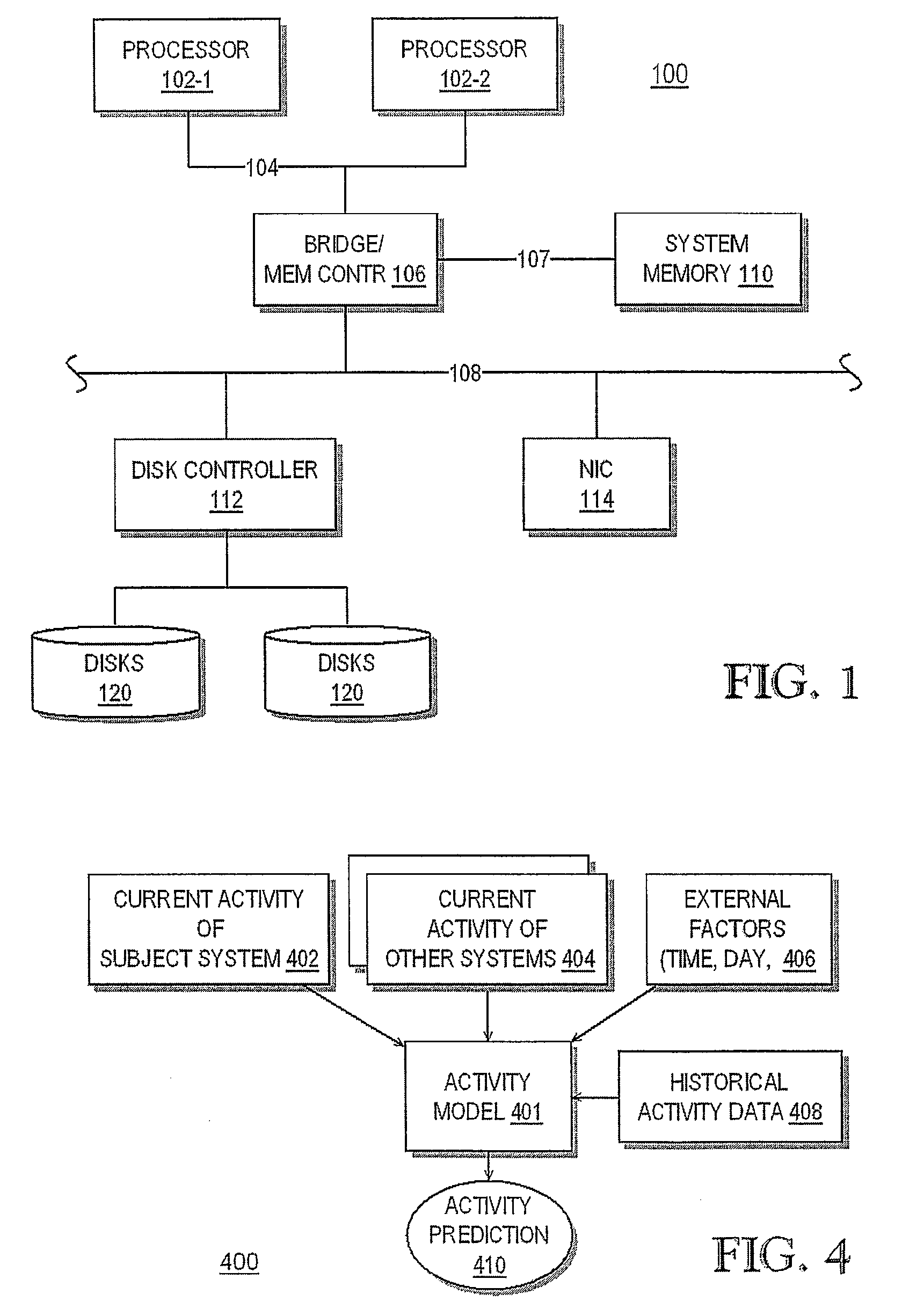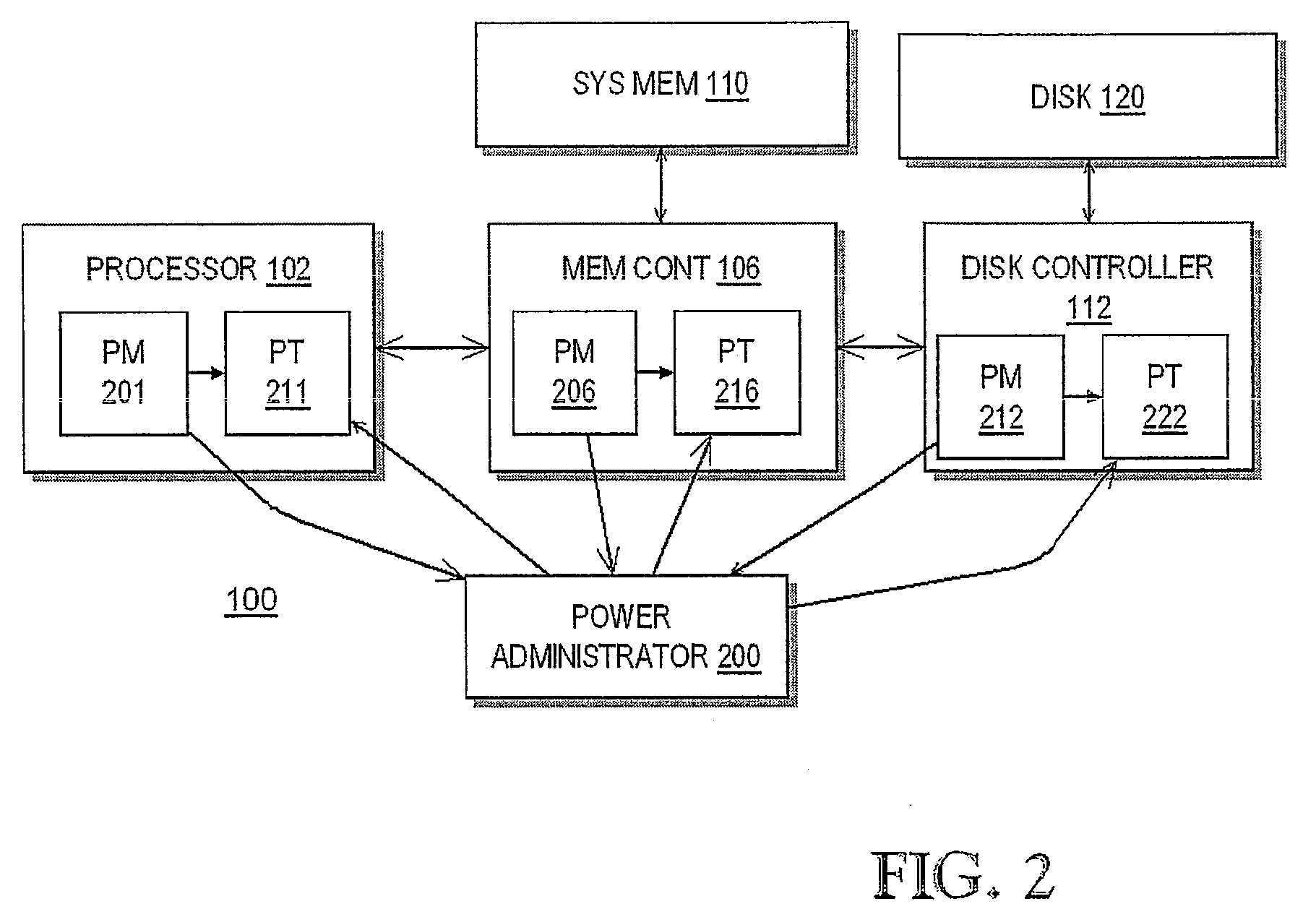Performance conserving method for reducing power consumption in a server system
a server system and power consumption technology, applied in the field of data processing systems, can solve the problems of limiting computing advancements, component-wise maximum budgets are rarely if ever realized, and insufficient power supply, so as to reduce voltage and frequency, and constrain processor activity.
- Summary
- Abstract
- Description
- Claims
- Application Information
AI Technical Summary
Benefits of technology
Problems solved by technology
Method used
Image
Examples
Embodiment Construction
[0020]This disclosure describes a method and system for managing power in a data processing system and, more specifically, allocating limited power among multiple system components with a minimal impact on system performance. A power budget is established for the system as a whole. The system predicts the activity of individual system components for an upcoming interval of time. Using knowledge of the relationship between activity and power consumption for each component, the system determines the amount of power required by all of the system components based on the predicted levels of activity. The power estimate for each component is used to then allocate the budgeted power amongst all the components. From the allocated power values, the system determines a limit on the level of activity of each component. The system then monitors the activity levels of the various components. If the level of activity of a component exceeds its limit, the system will throttle or otherwise constrai...
PUM
 Login to View More
Login to View More Abstract
Description
Claims
Application Information
 Login to View More
Login to View More - R&D
- Intellectual Property
- Life Sciences
- Materials
- Tech Scout
- Unparalleled Data Quality
- Higher Quality Content
- 60% Fewer Hallucinations
Browse by: Latest US Patents, China's latest patents, Technical Efficacy Thesaurus, Application Domain, Technology Topic, Popular Technical Reports.
© 2025 PatSnap. All rights reserved.Legal|Privacy policy|Modern Slavery Act Transparency Statement|Sitemap|About US| Contact US: help@patsnap.com



